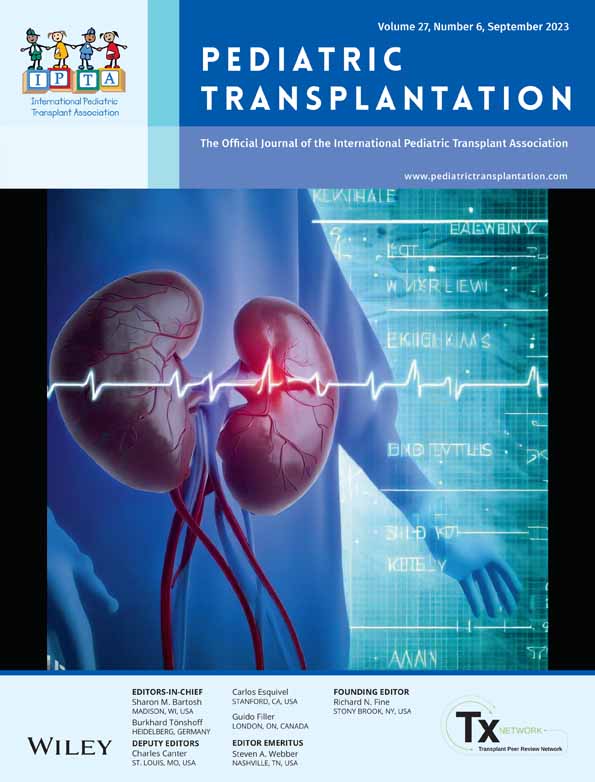Extracorporeal membrane oxygenation bridge to pediatric lung transplantation: Modern era analysis
Abstract
Background
Survival outcomes of children on extracorporeal membrane oxygenation (ECMO) at time of lung transplant (LTx) remain unclear.
Methods
Pediatric first-time LTx recipients transplanted between January 2000 and December 2020 were identified in the United Network for Organ Sharing Registry to compare post-transplant survival according to ECMO support at time of transplant. For a comprehensive analysis of the data, univariate analysis, multivariable Cox regression, and propensity score matching were performed.
Results
During the study period, 954 children under 18 years of age underwent LTx with 40 patients on ECMO. We did not identify a post-LTx survival difference between patients receiving ECMO when compared to those that did not. A multivariable Cox regression model (Hazard ratio = 0.83; 95% confidence interval: 0.47, 1.45; p = .51) did not demonstrate an increased risk for death post-LTx. Lastly, a propensity score matching analysis, retaining 33 ECMO and 33 non-ECMO patients, further confirmed no post-LTx survival difference comparing ECMO to no ECMO cohorts (Hazard ratio = 0.98; 95% confidence interval: 0.48, 2.00; p = .96).
Conclusions
In this contemporary cohort of children, the use of ECMO at the time of LTx did not negatively impact post-transplant survival.
CONFLICT OF INTEREST STATEMENT
The authors report no conflicts of interest and have no relevant disclosures regarding this manuscript.
Open Research
DATA AVAILABILITY STATEMENT
The data that support the findings of this study are available from the corresponding author upon reasonable request.




